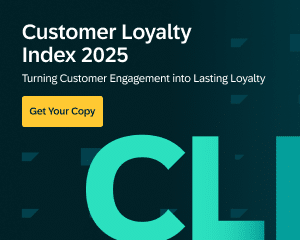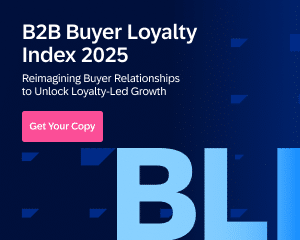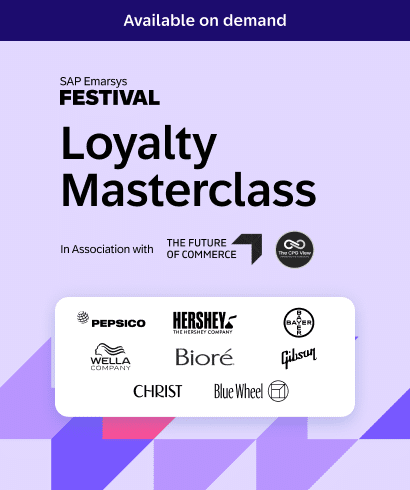Customer lifecycle marketing has evolved. With rising expectations and an ever-growing list of channels, audiences, and touchpoints, marketers are under pressure to deliver personalized experiences at every stage of the customer journey—without sacrificing efficiency.
One day, you’re welcoming new customers with onboarding flows. The next, you’re trying to win back dormant users with timely re-engagement campaigns. The complexity is real—but so are the opportunities.
In this article, we’ll show you how leading brands like Hobbii, Babbel, and Total Tools have advanced their customer lifecycle strategies using data, automation, and AI. Plus, we’ll break down seven proven tactics you can apply to drive loyalty, increase revenue, and create meaningful 1:1 customer connections.
The Challenge—and Opportunity—of Lifecycle Marketing
Building an effective customer lifecycle marketing strategy isn’t easy. As customer expectations rise and channels multiply, traditional, one-size-fits-all tactics quickly fall short.
Common roadblocks include:
- Fragmented data: Siloed systems prevent a unified view of the customer.
- Inconsistent messaging: Without alignment across touchpoints, your brand voice and offers lose impact.
- Automation without empathy: Scaling outreach is critical—but so is delivering human, meaningful experiences.
Fortunately, lifecycle marketing has evolved. Thanks to AI and automation, marketers can now deliver highly personalized, real-time interactions at scale. Predictive analytics, dynamic content, and omnichannel orchestration are empowering brands to reach the right customer, with the right message, at the right moment.
Brands like Hobbii, Babbel, and Total Tools are leading the way—using data and technology to turn lifecycle complexity into competitive advantage.
In the next section, we’ll explore the seven most effective customer lifecycle marketing strategies that modern marketers are using to drive engagement, loyalty, and revenue.
1. Use AI-Driven Personalization to Deliver Relevant Experiences at Scale
AI-powered personalization helps brands move beyond static segments by analyzing customer behavior, preferences, and real-time interactions. The result? Highly relevant, 1:1 experiences that boost engagement and conversions across the entire lifecycle.
Why this matters:
- Generic messages don’t cut it. If your emails, ads, or product recommendations feel impersonal, customers disengage quickly.
- Timeliness is key. AI enables brands to react instantly to behaviors—like abandoned carts or wishlist adds—triggering the right message in the moment.
What this strategy unlocks:
- Hyper-targeted recommendations: Serve products based on browsing history, purchase intent, or similar customer profiles.
- Real-time content adaptation: Automatically adjust content, offers, and messaging as a customer’s context changes.
Scalability: Eliminate manual effort by automating personalization across email, SMS, push, and more.
By learning from every click, open, and purchase, AI helps you continuously refine your messaging—creating tailored experiences that drive more frequent purchases and long-term loyalty.
Pro tip: With SAP Emarsys, you can personalize product recommendations, email content, and timing based on real-time customer behavior and lifecycle stage—no manual setup required.
2. Orchestrate Omnichannel Journeys That Feel Seamless Everywhere
Modern customers interact with brands across a mix of channels—email, SMS, push notifications, apps, websites, and even in-store. Omnichannel orchestration ensures that each of those touchpoints works together in a coordinated, personalized way.
Why this matters:
- Disconnected channels create confusion. Without orchestration, customers may receive conflicting messages or redundant promotions.
- Context builds trust. When shoppers see consistent messaging—tailored to their channel and behavior—they feel understood and valued.
What this strategy unlocks:
- Unified brand experience: Deliver consistent messaging and offers across every channel, from online browsing to in-store visits.
Cross-channel automation: Trigger follow-ups based on behavior, like sending an SMS reminder after a cart abandonment email.
Better attribution and insights: Understand how each touchpoint contributes to conversion and fine-tune your strategy accordingly.
Omnichannel orchestration helps brands connect every step of the customer journey, creating frictionless experiences that drive conversion and loyalty.
Pro tip: SAP Emarsys lets you design, automate, and optimize cross-channel journeys—so you can engage customers in the right channel, at the right time, with the right message.
3. Use Predictive Analytics to Anticipate Customer Needs
Predictive analytics helps marketers shift from reactive to proactive by forecasting future customer behavior—such as likelihood to purchase, churn risk, or product interest—based on historical data and real-time signals.
Why this matters:
- Timing is everything. Waiting until a customer churns is too late. Predictive insights allow you to act before engagement drops off.
- Smarter decisions require better data. Gut instinct isn’t enough—especially when allocating budget or planning campaigns.
What this strategy unlocks:
- Proactive retention tactics: Identify at-risk customers and re-engage them with timely offers or content.
- Personalized upsells and cross-sells: Recommend the next-best product or service based on past behaviors and similar users.
- Improved campaign performance: Focus your efforts on high-value customers most likely to convert, rather than spreading resources thin.
Predictive models make it easier to target the right people at the right time, increasing both efficiency and ROI throughout the customer lifecycle.
Pro tip: SAP Emarsys predictive analytics models—like churn prediction and next-best action—help you engage smarter and boost customer lifetime value automatically.
4. Respond in the Moment with Real-Time Behavioral Targeting
Real-time behavioral targeting allows you to personalize experiences based on a customer’s immediate actions—like browsing a product page, clicking an email, or pausing on a specific item in your app.
Why this matters:
- Marketing delays cost conversions. If your messaging isn’t in sync with what the customer is doing right now, you’re missing critical engagement windows.
- Relevance drives action. The more aligned your messaging is with a customer’s current intent, the more likely they are to convert.
What this strategy unlocks:
- Instant follow-ups: Trigger emails, push notifications, or SMS messages based on in-the-moment behaviors (e.g., price drop alerts, cart reminders).
- Higher conversion rates: Capture micro-moments when intent is highest—like browsing a product or returning after a long absence.
- More meaningful interactions: Deliver messages that feel timely and relevant, not generic or outdated.
With real-time behavioral targeting, your brand becomes more responsive—and more trusted—by showing up when it matters most.
Pro tip: SAP Emarsys lets you trigger real-time messages across channels based on behavioral signals, helping you reduce cart abandonment and increase engagement instantly.
5. Optimize Engagement with Dynamic Content
Dynamic content optimization uses AI to automatically test and serve the most effective versions of your content—images, CTAs, subject lines, or layouts—based on user behavior and preferences.
Why this matters:
- Static content quickly becomes stale. What worked last month might flop today if it’s not adapted to your audience.
Every customer is different. A one-size-fits-all approach fails to connect across diverse segments and lifecycle stages.
What this strategy unlocks:
- Continuous performance improvements: AI can A/B or multivariate test different elements and optimize them in real time.
- Personalized creative at scale: Automatically tailor visuals and messaging to match customer profiles or actions.
- More clicks and conversions: Refined content leads to more engagement, helping you get more out of every campaign.
This “always-on” optimization helps you keep content fresh, relevant, and high-performing—without constantly rebuilding from scratch.
Pro tip: SAP Emarsys uses AI to test and optimize content across emails and web campaigns, so you can serve the best-performing version to every customer automatically.
6. Drive Relevance with Advanced Customer Segmentation
Advanced segmentation goes beyond basic demographics to group customers based on behaviors, preferences, lifecycle stage, and predicted value—unlocking far more relevant and effective campaigns.
Why this matters:
- Broad segments lead to weak results. Generic messages to large, undifferentiated groups tend to underperform.
- Customer needs change. Static lists quickly become outdated as behaviors shift.
What this strategy unlocks:
- Dynamic audience updates: Automatically move customers between segments based on real-time activity, like recent purchases or loyalty tier changes.
- Precision targeting: Tailor offers to niche groups—like lapsed VIP customers or high-frequency buyers in a specific category.
Better resource allocation: Focus high-touch strategies on your most valuable or at-risk audiences.
When you speak to customers based on what they actually do (not just who they are), you increase the odds they’ll respond—and come back.
Pro tip: With SAP Emarsys Smart Segments, you can build and update granular audiences using AI and predictive insights, no manual effort required.
7. Map and Automate the Entire Customer Journey
Automated lifecycle journey mapping enables you to design adaptive journeys that respond to each customer’s behavior and lifecycle stage—without manual intervention at every step.
Why this matters:
- Manual workflows don’t scale. It’s impossible to manually adjust journeys for thousands (or millions) of customers in real time.
- Disconnected experiences lose customers. If your messaging doesn’t reflect where someone is in their journey, they’re likely to disengage.
What this strategy unlocks:
- Lifecycle-based automation: Trigger different journeys based on key events—like first purchase, loyalty tier upgrade, or inactivity.
Context-aware messaging: Deliver the right content based on real-time signals (e.g., what a customer viewed, clicked, or bought). - Higher retention and satisfaction: Keep the relationship strong by staying relevant at every touchpoint.
By mapping your lifecycle stages and automating engagement around them, you can deliver smoother experiences and drive long-term loyalty—without burning out your marketing team.
Pro tip: SAP Emarsys Customer Lifecycle Management makes it easy to build personalized journeys across onboarding, growth, retention, and reactivation—using pre-built tactics or custom automations.
Real-Life Examples of Customer Lifecycle Marketing in Action
The best strategies are the ones that deliver real results. Here’s how three leading brands—Hobbii, Babbel, and Total Tools—advanced their customer lifecycle marketing using automation, personalization, and data to drive growth and loyalty.
Hobbii: Personalization at Every Stage of the Customer Journey
Challenge:
Hobbii, a Danish crafts and hobby retailer, struggled to engage a diverse customer base with one-size-fits-all newsletters. Their audience ranged from casual crafters to expert knitters, but their marketing didn’t reflect those differences.
Strategy:
- Behavior-based automation: Hobbii used customer data like purchase history and engagement to trigger tailored messages for different shopper types—e.g., beginner crocheters vs. advanced knitters.
- Loyalty-driven lifecycle marketing: Their “My Hobbii” loyalty program offered exclusive perks, early access, and personalized content that deepened customer relationships over time.
Results:
- 📈 1.1 million+ loyalty members joined the program, boosting repeat engagement.
- ❤️ Improved customer satisfaction through personalized product recommendations and relevant offers.
Pro tip: With SAP Emarsys, you can automate personalized journeys based on behavior, lifecycle stage, and loyalty status—just like Hobbii.
Babbel: Scaling Personalization with AI-Powered Insights
Challenge:
When the COVID-19 pandemic hit, Babbel—a global language learning platform—saw demand surge by over 200% in Europe and 100% in the U.S. Their existing marketing setup couldn’t keep pace with the influx of new users or meet the growing demand for personalized learning experiences at scale.
Strategy:
- AI-driven personalization: Babbel used artificial intelligence to tailor lessons, content, and offers to each user based on language, skill level, learning intent (e.g., travel vs. career), and engagement history.
Free trial funnel optimization: By offering a low-friction entry point and analyzing real-time behavior (like lesson completion and login frequency), Babbel adapted lifecycle messaging to move users toward conversion.
Results:
- 🚀 +25% boost in user engagement after implementing real-time, personalized interactions.
- 📧 +50% higher conversion rate when combining push notifications with email versus using email alone.
Pro tip: SAP Emarsys helps you analyze in-session behaviors and automatically trigger personalized content across email, push, and more—so you can move users from trial to loyalty faster.
"We want to personalize the whole product experience. Eventually, no two people who enter our bubble should have the exact same experience if they use the product differently. We're working to have personalized recommendations at all times."
Total Tools: Unifying Data to Power Omnichannel Engagement

Challenge:
Total Tools, one of Australia’s leading tool retailers, had a fragmented view of its customers. Data was siloed across in-store purchases, online behavior, and a limited loyalty program—making it difficult to deliver personalized offers or track campaign effectiveness across channels.
Strategy:
- Centralized customer profiles: Total Tools integrated data from point-of-sale, ecommerce, and loyalty systems to create a unified view of each customer.
- Loyalty program revamp: With centralized data, the team redesigned their loyalty experience to include personalized deals, exclusive event invites, and tailored product recommendations.
- Omnichannel campaigns: Using real-time insights, Total Tools launched targeted web campaigns and triggered communications across channels based on behavior and preferences.
Results:
- 🔧 200% increase in loyalty sign-ups, thanks to a more relevant and rewarding experience.
📊 More effective web campaigns powered by real-time segmentation and personalized product offers.
Pro tip: SAP Emarsys gives you a 360° customer view and the tools to launch data-driven, omnichannel campaigns that convert—both online and in-store.







